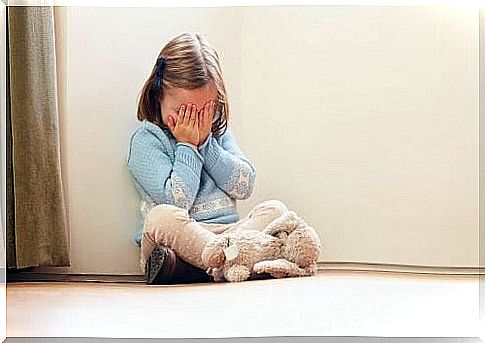Stopping Tantrums In Children: What Should I Say?

Having tantrums in children is their way of saying, “What I feel is stronger than myself. And I can’t control it.” It is normal for children to have these strong feelings of anger. After all, they are not yet able to put their intense feelings into words.
Tantrums in children usually start from the age of two. It is important that they are handled appropriately. In this way you contribute to the healthy emotional development of your child.
There are different types of tantrums. Sometimes a tantrum can be a tool for the child to manipulate and get what he or she wants. In contrast, in other cases, they may be rooted in deeper feelings.
In any case, don’t respond to your child’s tantrum with a tantrum of your own. Keep calm and control your feelings.
As a parent, you should talk to your child about what happened. But don’t do this while he is still kicking or yelling. Once your child has calmed down, you can talk to him.
In a crisis situation, children do not listen to reason. That’s why experts suggest that during an outburst, simply respond to your child with a hug. Speak sweetly and softly to your child and wait. When the tantrum is over, it’s time to talk.

S strategies constitutes to stop tantrums in children
As we noted, tantrums in children are completely normal during early childhood. That is why it is very important to talk to your child after every mood. That way you help him think and grow, and you prevent the tantrums from recurring.
- Remember to be clear, clear, and concrete with your child. It is important that your child understands what you are saying.
- Friendly gestures, hugs, a smile and a sweet voice are essential for communication between you and your child in these situations. However, this doesn’t mean you have to approve of his behavior. Let your child know that his outburst was unacceptable. In addition, you should also let him know that you as parents care about him.
- During tantrums in children, the adult in charge of the child’s care should assess the situation. If you are somewhere where your child could get hurt, take him to a more suitable area first. During those few minutes, it’s best not to say anything at all. One strategy for stopping a tantrum may be to direct your child’s attention elsewhere. That way they forget what caused the situation. And under your guidance, they can then focus their attention on something else.
Positive Confirmation
- The conversation with your child should not be a reprimand. Remember that these outbursts are often involuntary and uncontrollable. Phrases such as “I’ll help you with this” or “Don’t worry, I’m here for you,” accompanied by a warm, reassuring tone, will make your child feel calm and safe.
- Once the tantrum is over, it’s important that you show your child how glad you are that he has recovered. Now is the time to explain to your child what would have been a better response. Try to use such sentences:
- “When you feel this way, try to talk to me. Tell us what you feel and we’ll work it out together.”
- “If mom says ‘no’, you can ask why. There is always a reason and it is always for your own good.”

The right way of communicating
- When speaking to your child, be careful not to judge or disapprove of him as a person. Just talk about his behavior. You should never give your child the idea that he is “naughty”. What he did was naughty. This is a fundamental distinction for discussing his behavior and the reason behind it. Children will only tell you what’s on their mind if they don’t feel judged.
- Children’s thinking is simple. That is why it is best to avoid vague and general wording. For example, it’s common for us to say things like, “Be nice to our children .” But this expression can refer to so many different actions that your child will not fully understand it. Other messages such as “sit still”, “stop yelling” or “keep off everything” are much clearer and easier to understand.
- Talking to your child also means listening to your child. Try to understand the reason behind their behavior. This is a perfect time for your child to analyze his behavior and understand why it was not appropriate. Don’t underestimate your child’s understanding.
Tantrums in children usually disappear as they grow up, although tantrums can appear in a different form during adolescence. But regardless of your child’s age, the general advice on how to stop tantrums remains the same.
Stay calm and engage in conversation by both listening and talking. Adapt your message to your child’s character traits. Above all, show your child that you love him and make sure he feels safe and cared for.









